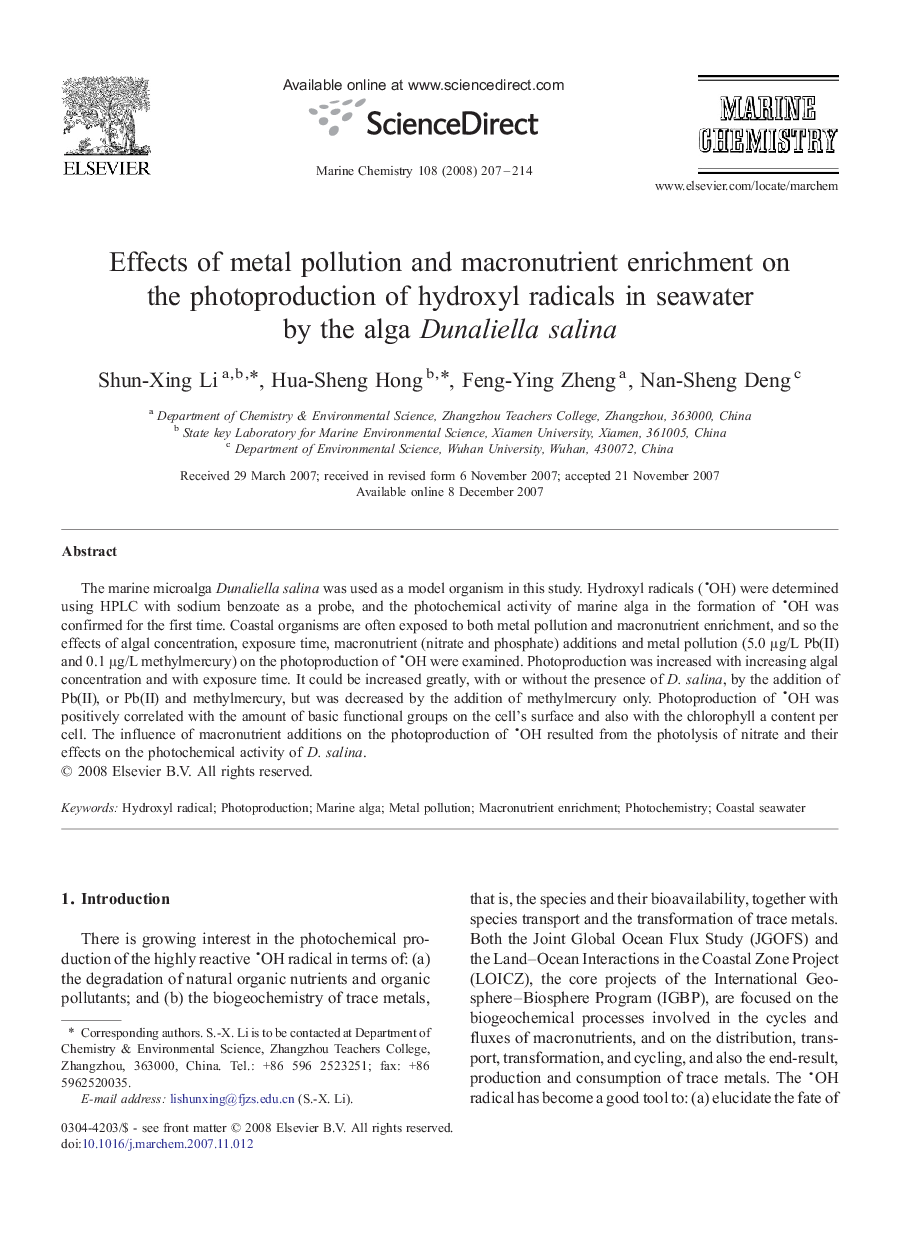| Article ID | Journal | Published Year | Pages | File Type |
|---|---|---|---|---|
| 1263215 | Marine Chemistry | 2008 | 8 Pages |
The marine microalga Dunaliella salina was used as a model organism in this study. Hydroxyl radicals (OH) were determined using HPLC with sodium benzoate as a probe, and the photochemical activity of marine alga in the formation of OH was confirmed for the first time. Coastal organisms are often exposed to both metal pollution and macronutrient enrichment, and so the effects of algal concentration, exposure time, macronutrient (nitrate and phosphate) additions and metal pollution (5.0 μg/L Pb(II) and 0.1 μg/L methylmercury) on the photoproduction of OH were examined. Photoproduction was increased with increasing algal concentration and with exposure time. It could be increased greatly, with or without the presence of D. salina, by the addition of Pb(II), or Pb(II) and methylmercury, but was decreased by the addition of methylmercury only. Photoproduction of OH was positively correlated with the amount of basic functional groups on the cell's surface and also with the chlorophyll a content per cell. The influence of macronutrient additions on the photoproduction of OH resulted from the photolysis of nitrate and their effects on the photochemical activity of D. salina.
